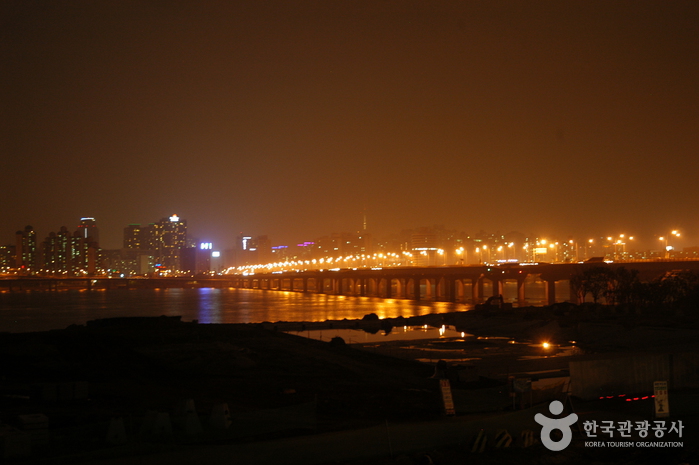Seoul National University Hospital Gangnam Center (서울대학교병원 강남의원)
5.2Km 2025-10-23
(38th,39th Floors and Part of 3rd Floor), 152 Teheran-ro, Gangnam-gu, Seoul
Seoul National University Hospital Gangnam Center, an extension of the world-renowned Seoul National University Hospital, offers specialized checkups annually to over 50,000 visitors. Notably, the center boasts exceptional success rates, including a global-leading 1% cancer diagnosis rate and top-level 50% detection rate for colorectal adenomas.
Sinsa Su Pharmacy [Tax Refund Shop] (신사수약국)
5.2Km 2024-04-16
1F, 28, Apgujeong-ro 28-gil, Gangnam-gu, Seoul
-
Tailor Plastic Surgery [Tax Refund Shop] (테일러성형외과의원)
5.2Km 2024-04-16
#402, 838, Nonhyeon-ro, Gangnam-gu, Seoul
-
Faceline Plastic Surgery (페이스라인 성형외과의원)
5.2Km 2025-10-23
(1st Floor, Wonbang Plaza), 838 Nonhyeon-ro, Gangnam-gu, Seoul
Faceline Plastic Surgery has operated with an accident-free record for 20 years, adhering to the motto "A place where I and my family can safely undergo plastic surgery".
The medical team at Faceline Plastic Surgery includes Dr. Lee Tae-Hee and Dr. Lee Jin-Su, both alumni of Seoul National University College of Medicine, alongside Dr. Lee Shin-Jeong, a graduate of Seoul National University School of Dentistry. They have been working together since the clinic's establishment in Apgujeong in 2005. They regularly present their accumulated clinical experience and expertise at international conferences and have showcased numerous surgical cases through various makeover programs.
Clients of Faceline Plastic Surgery demonstrate unwavering trust over the years, returning for additional procedures. For instance, a client who underwent facial contouring surgery may return for a face lift after 10 years, or a child of a patient who had double jaw surgery might seek similar treatment 20 years later. Similarly, a parent of a patient who had ophthalmoplasty might return for upper blepharoplasty surgery.
In this manner, Faceline Plastic Surgery maintains long-term relationships based on client trust and satisfaction, continuously providing high-quality medical services. The clinic guarantees optimal results based on its extensive experience and skills accumulated over the years.
Glovi Plastic Surgery (글로비성형외과의원)
5.2Km 2025-10-23
(6th Floor, EGI Building), 843 Nonhyeon-ro, Gangnam-gu, Seoul
"Glovi Plastic Surgery strives to understand the hearts of our clients."
While standards of beauty have varied across eras and individuals, true beauty remains timeless. At Glovi Plastic Surgery, we are dedicated to discovering and delivering enduring beauty by continuously researching and refining our techniques to ensure the highest level of satisfaction for each patient.
With extensive experience and exceptional technical expertise, Glovi Plastic Surgery offers personalized cosmetic surgery programs tailored to individual characteristics. Our dedicated stem cell research lab, certified by the Ministry of Science, ICT and Future Planning as an R&D department, showcases our differentiated technological capabilities. Additionally, we provide customer satisfaction programs that prioritize patient safety and convenience.
Glovi Plastic Surgery's commitment to rewarding your choice with beauty and confidence continues every day.
ARTEASPOON (아티스푼)
5.2Km 2025-10-23
7 Sinheung-ro 36-gil, Yongsan-gu, Seoul
ARTEASPOON operates cultural arts programs centered on paintings, music, and books. It also has a program related to exploring one's feelings and mind, and offers a special program for foreigners for learning Korean culture and art. Located in Huam-dong at the foothills of Namsan Mountain, it's an ideal place to immerse in art and inspirations.
Seoul Hyochang Park (서울 효창공원)
5.2Km 2024-07-09
177-18 Hyochangwon-ro, Yongsan-gu, Seoul
+82-2-2199-7608
Hyochang Park covers 122,245 square meters spanning across Hyochang-dong and Cheongpa 2-dong. It is a historic landmark that once contained several royal tombs, and was known at that time as Hyochangwon. The cemeteries that were originally located in Hyochangwon belonged to Crown Prince Munhyo, King Jeongjo’s first son who died at the age of five; Royal Noble Consort Uibin of the Seong Clan, King Jeongjo’s royal concubine and Crown Prince Munhyo’s mother; Royal Noble Consort Sugui of the Park Clan, King Sunjo’s royal concubine; and her daughter Princess Yeongon. The royal tombs were moved to Seooreung Tombs in the waning months of the Japanese colonial period. The Japanese empire began the development of Hyochangwon into a park in 1924, and the Japanese governor-general officially assigned the site as a park in 1940.
Presently, several of Korea’s greatest leaders are buried in Hyochang Park. The remains mostly belong to independence activists including Yoon Bong-gil, Lee Bong-chang, and Baek Jeong-gi, whose graves are collectively known as Samuisa Tomb. A statue of Lee Bong-chang has been built in the graveyard. Among the other patriotic martyrs who are interred in the park are Kim Gu and some of the key figures of the provisional government such as Lee Dong-nyeong, Cha I-seok, and Cho Seong-hwan. An ancestral shrine named Uiyeolsa has been built along the main gate and holds the portraits of the deceased independence activists.
Apgujeong Yeong Pharmacy - Apgujeong Branch [Tax Refund Shop] (압구정영약국 압구정)
5.2Km 2024-04-18
1F, 25, Apgujeong-ro 28-gil, Gangnam-gu, Seoul
-
Mapodaegyo Bridge (마포대교 야경)
5.2Km 2021-03-26
Mapo-dong, Mapo-gu, Seoul
+82-2-3153-8365
Mapodaegyo Bridge connects Yonggang-dong, Mapo-gu and Yeouido-dong, Yeongdeungpo-gu. The bridge is 1,400 meters long and 25 meters wide (6-lane road), and was the fourth bridge to be built over the Hangang River, following the construction of Hannam Bridge. The construction of the bridge first started in February of 1968 and was completed in May of 1970. At the time of its completion the bridge was named Seouldaegyo Bridge, but was later changed to Mapodaegyo Bridge in 1984.

![Sinsa Su Pharmacy [Tax Refund Shop] (신사수약국)](http://tong.visitkorea.or.kr/cms/resource/76/2879676_image2_1.jpg)
![Tailor Plastic Surgery [Tax Refund Shop] (테일러성형외과의원)](http://tong.visitkorea.or.kr/cms/resource/02/2879602_image2_1.jpg)

![The Face Dental [Tax Refund Shop] (더페이스치과의원)](http://tong.visitkorea.or.kr/cms/resource/00/3314200_image2_1.jpg)
![Apgujeong Yeong Pharmacy - Apgujeong Branch [Tax Refund Shop] (압구정영약국 압구정)](http://tong.visitkorea.or.kr/cms/resource/89/2879689_image2_1.jpg)

 English
English
 한국어
한국어 日本語
日本語 中文(简体)
中文(简体) Deutsch
Deutsch Français
Français Español
Español Русский
Русский